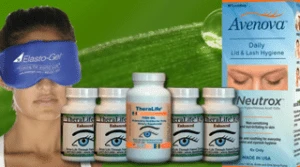Blepharitis occurs in eyes and affects the eyelids. It can cause swelling or stickiness in brows. An inflammatory reaction occurs at the top of the eyelid.
Blepharitis causes swollen, itchy eyelids
Symptoms
Blepharitis can be linked directly to a number of eye disorders including eye pain.
Blephalitis can cause multiple symptoms.
People who suffer from blepharitis can experience red eyelid irritation of the eyelids. Typically blepharitis causes mild discomfort but rarely itching. This condition causes a wide variety of more severe conditions, such as blind spots resulting in misdirected and distorted eyes.
If you touch a dreaded skin irritant on the skin or rub it could cause another infection.
Signs
Blepharitis can cause a variety of symptoms including sneezing and burns to the eyelid surfaces and conjunctival irritation.
Symptoms are usually worse at dawn than in Keratoconjunctivitis sicca, and worse at night.
How common?
It’s common.
Blepharitis is common in both adult and infants.
However staphylococcal blepharitis has been reported in some cases in children. That’s the case in almost all cases.
Blepharitis can take place towards the front of the eyelid (anterior blepharitis), affecting eyelashes, or the back of the lid (posterior blepharitis), affecting oil-producing Meibomian glands inside the eyelid itself.
Causes
Blepharitis can cause numerous conditions and can be either chronic (symptoms that persist from weeks or decades) or acute.
Chronic diseases can occur: More frequently there can be systemic problems which are necessary to consult with other medical fields, such as dermatology and rhematology. These diseases include cutaneous and connective tissue cancers and immunologic disorders.
Severe forms of acute blepharitis can cause eyelid inflammation and eye irritation.
Seborrheic dermatitis — dandruff of the scalp and eyebrows Infection.
- Clogged or malfunctioning oil glands in your eyelids
- Rosacea — a skin condition characterized by facial redness.
- Allergies, including allergic reactions to eye medications, contact lens solutions or eye makeup.
- Eyelash mites or lice Dry eyes
Blephalitis can cause red, thickened eyes and flaky crusting on lashes. The term ‘eyedandruff’ has come to prominence in recent years. Over time a sticky layer of tissue forms along the lip of your lid causing the lashes to fall out, blocked pores causing infection and many more problems.
Blepharitis can be diagnosed by an examination of the eyes. If required, a doctor may remove the eyelid from the eye brow to test for bacteria and demodex mite infestations.
Problems with oil glands in their eyelids, leading to blepharitis.
Can poor hygiene habits be the cause ?
A lack of hygiene is also a factor causing blephalitis.
Symptomatic blepharitis can occur through poor health care.
Almost everyone cleans their eyelids daily or nightly. However, those suffering from a hazard may need eyelid hygiene.
Causes & risk factors
Anterior blepharitis can cause bacteria (staphylococcal blepharitis), hair dandring or a rash. These bacteria are usually found on the face and lid, but when these bacteria are spores, they cause an infection.
In some cases allergy or mite infestation in eyelashes may cause anterior blepharitis.
Posterior blepharitis is often a condition where glands in eyelid gland production are irregular (meibomian blepharitis). Consequently, the bacteria are growing more effectively. Posterior blepharitis may develop from other skin problems, like skin infections and hair loss.
Chronic blepharitis
One study found that 30% of people with chronic blepharitis had Demodex mites.
The underlying causes of chronic blepharitis are not well understood.
Prognosis for Blepharitis Acute blepharitis most often responds to treatment but may recur, develop into chronic blepharitis, or both. Chronic blepharitis is indolent, recurrent, and resistant to treatment.
Causes of posterior blepharitis
Symptoms of blepharitis are characterized as staphylococci, seborrheic ulcerative or meiburoma. Examples:
What are other risk factors?
Aside from having rosacea or dandruff, you can develop blepharitis as soon as:
seborrheic blepharitis
In seborrheic blepharitis, greasy, easily removable scales develop on eyelid margins. Most patients with seborrheic blepharitis and meibomian gland dysfunction have symptoms of keratoconjunctivitis sicca
Seborrheic blepharitis has symptoms that include greasy flakes. Ulcerative blepharitis may cause bleeding when you remove crusts. Meibomian blepharitis causes your tears to be of poor quality.
Stye
A stye is a bacterial infection involving one or more of the small glands near the base of your eyelashes. It is similar to a boil or a pimple and is often painful.
Diagnosis
An eye doctor can determine the type of blepharitis based on the appearance of the eyelid margins.
Blepharitis is a symptom that is detected by an eye test. A physician can diagnose blepharitis in an eyelid by measuring the margins of a pupil or eyelid. Symptoms vary according to the type.
Best way to treat
Your blepharitis treatment is determined based on the type. Depending on what treatment is recommended, you may need to undergo eyelid resection.
Treatments
While blepharitis can’t be completely treated permanently, the symptoms can be easily treated with daily eyelid hygiene measures and medication. Various treatments have been developed.
Antibiotics
You can also take antibiotic eye drops such as bacitracine ophthalmic and polysporin for eye ocular conditions.
Treatments can help control bacteria or reduce irritation. In cases of severe bacterial infections, doxycycline or azithromycin are often prescribed.
Cool and warm compresses
Apply an ice-cold compress over eyelids with eyes open for 10 min to relieve irritation. It can also be used with warm compresses.
Warm compresses can help soften crust and loosen oily debris.
Lubrication
Dry eye may occur simultaneously with bifadal sclerosis. The use of artificial tears is often recommended.
Treating the root cause
Using the right treatment can relieve blepharitic symptoms by treating the root cause of the condition.
Skin conditions such as Rosaceas may be associated with more frequent blepharitis in children. Some medicines for dry eye can also help.
Lubrication
Dry eye may occur simultaneously with bifadal sclerosis. The use of artificial tears is often recommended.
Anti-inflammatories
Your doctor may add steroids to your prescription to treat the problem. Steroid therapy can help with inflammation.
The patient’s doctor can also prescribe an antibiotic and a neuropathic medicine to treat inflammatory conditions.
Medications
Antibiotics, steroids or other medicines can be administered in either oral form as eye drops or as tablets.
To prevent any adverse effects on gastrointestinal or heart health, follow any dosage guidance given by a doctor.
Immunomodulators
A new study showed cyclosporine ophthalmic treatment can improve the inflammation in posterior blepharitis. The medication blocks immune responses to your cells, thereby preventing inflammation.
in-office procedures, such as:
- Microblepharoexfoliation:
- Microsponge gently exfoliates away the biofilm, crusting, bacterial colonies and demodex infesting the eyelashes
- Intense pulsed light (IPL): Non-laser light energy is applied to the eyelid skin, and this can liquefy obstructions in the Meibomian glands, improve oil secretion, decrease eyelid redness and reduce spider veins.
- Thermal pulsation: Specialized applicator devices are gently applied to the eyelids which provide controlled thermal (heat) energy and massage (pulsation) to the eyelids and oil glands
Can I treat it at home?
Some kinds of blepharitis can be managed by taking home care and reducing pain. If you believe you may have blepharitis, try these suggestions. If removing eye crusts from your eyelids is not enough, you need to get your eyes evaluated by a medical practitioner.
Clean your eyelids using cotton wool or a cotton bud. It might help to use a small amount of baby shampoo in water. Gently wipe along the edge of your eyelids to remove any flakes or crusts.
Eyelid scrubs Soak a clean washcloth, cotton swab (Q-tip) applicator, or lint-free pad in baby shampoo diluted in warm water. Then use it to gently scrub the base of your eyelashes.
Best Blepharitis Treatment- All Natural and Effective: TheraLife





